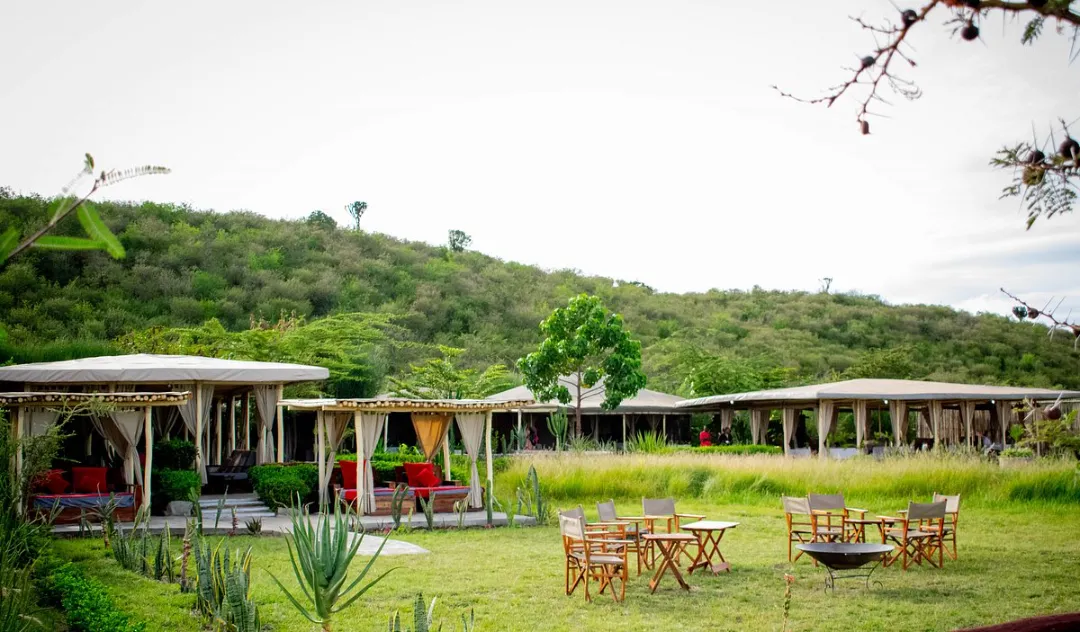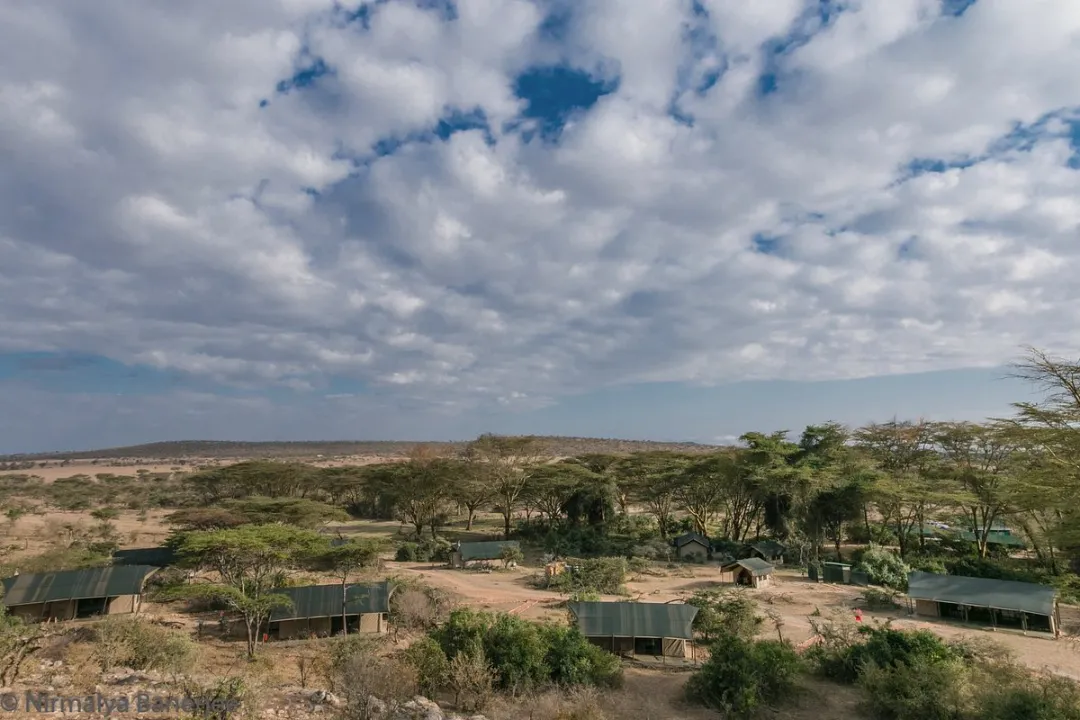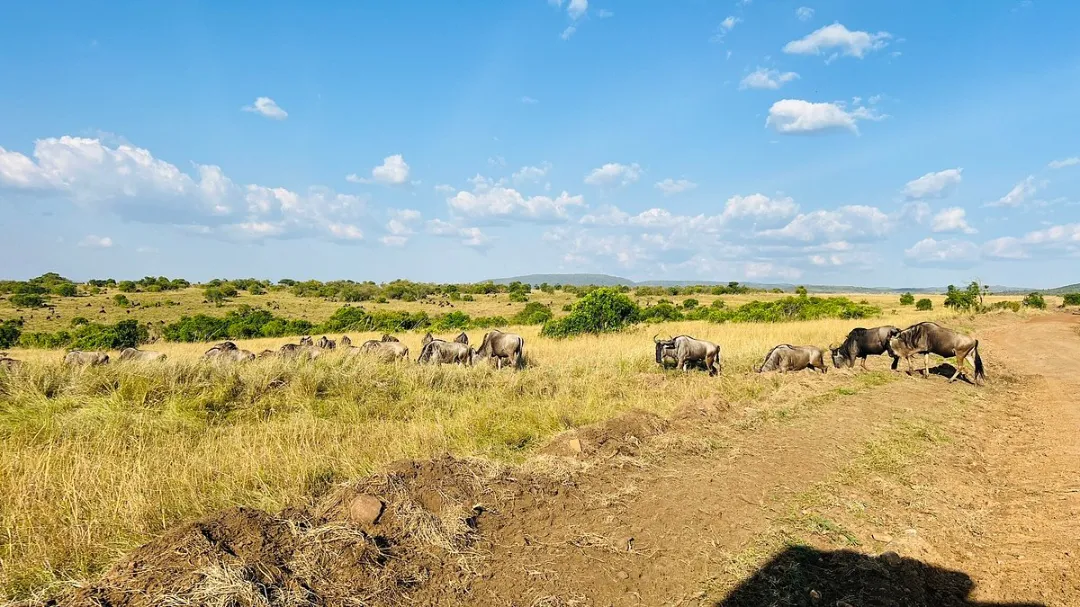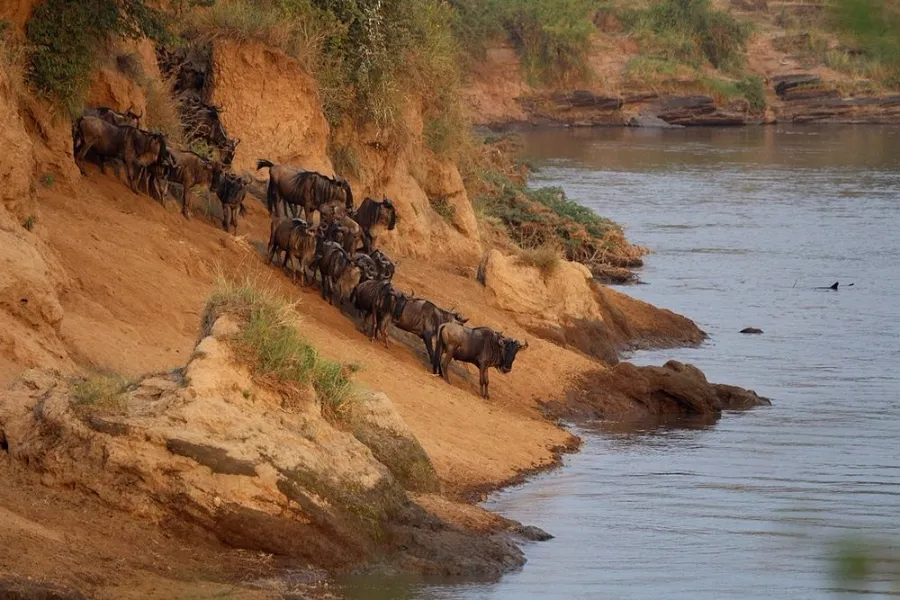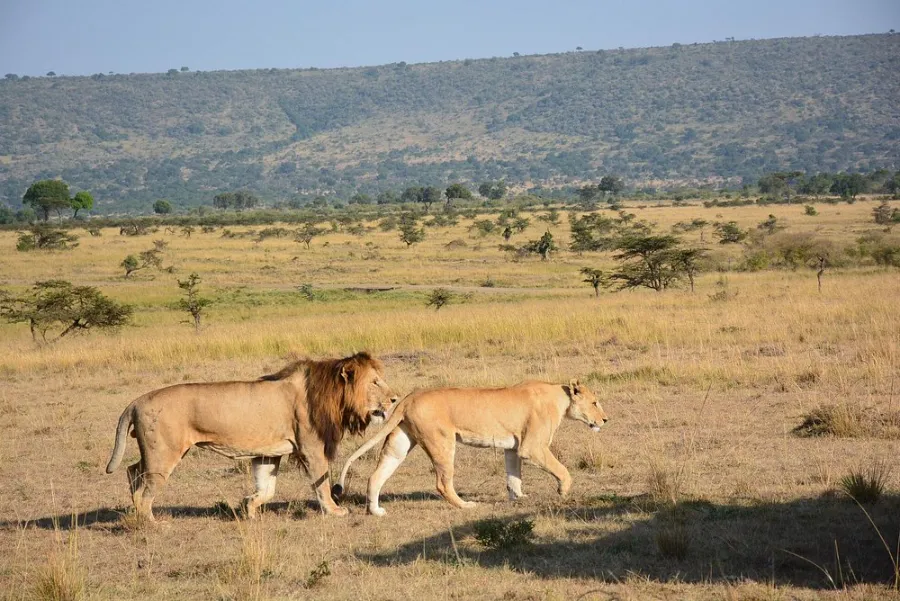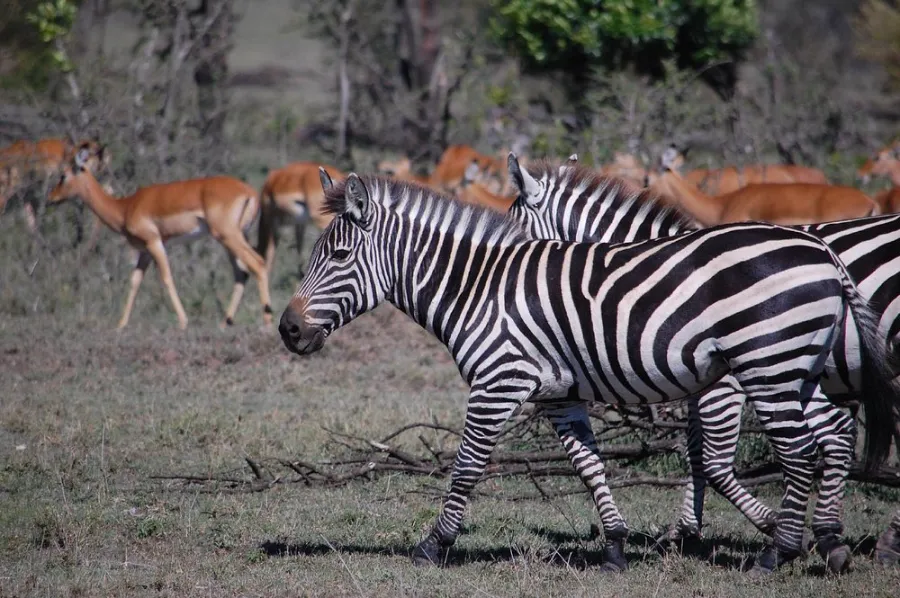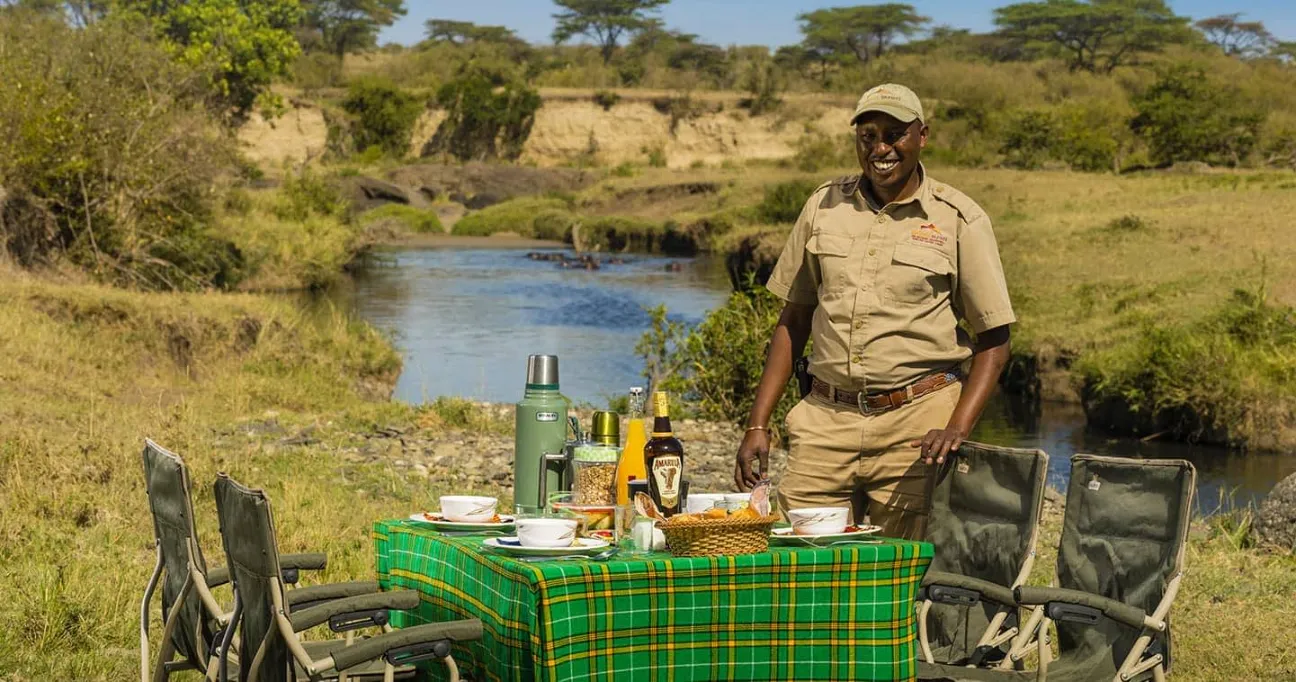The Best Times and Places to Witness the Great Migration Kenya
Table of Contents
The great migration is a stunning natural event where over 1.5 million wildebeest, zebras, and antelopes travel from the Serengeti to Masai Mara. This spectacle happens from July to October and features dramatic river crossings and predator interactions. Here’s what to expect and how to witness it.
Key Takeaways
Kenya’s Masai Mara is a key location in the Great Migration, where over 1.5 million wildebeest, 200,000 zebras, and numerous antelopes migrate, significantly impacting the region’s ecological balance.
The optimal period for witnessing the Great Migration in the Masai Mara is from July to October, with varying experiences each month, including dramatic river crossings and periods of calm grazing.
To maximize the safari experience, careful planning is required, including knowledge of visa requirements, accommodations, health precautions, and guided tours for the best wildlife viewing opportunities.
Kenya’s Role in the Great Wildebeest Migration
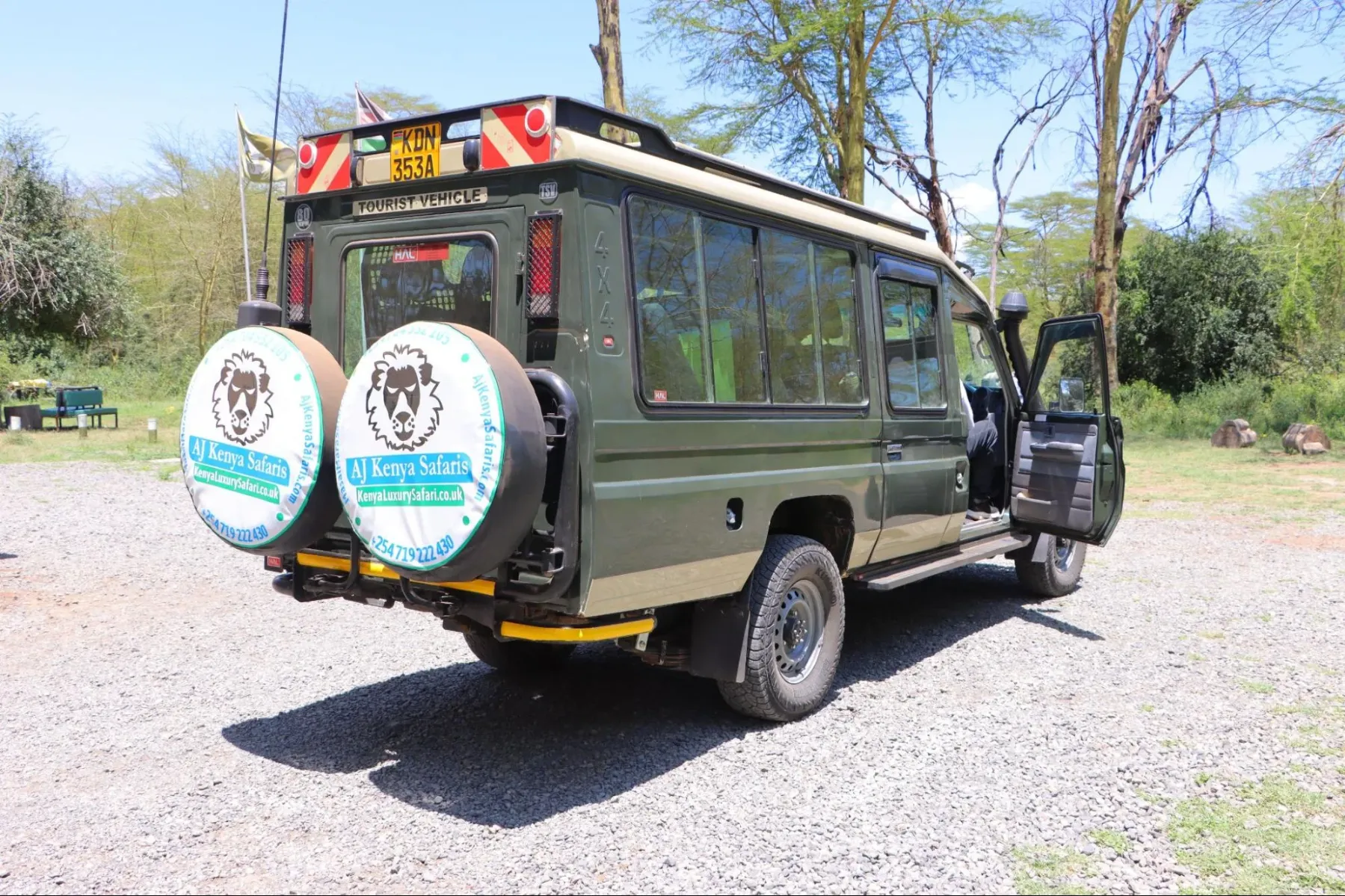
Kenya, particularly the Masai Mara, plays a pivotal role in the Great Migration. This annual event sees over 1.5 million wildebeest, accompanied by 200,000 zebras and countless antelopes, migrate from Tanzania’s Serengeti National Park to Kenya’s Masai Mara National Reserve. Covering approximately 1,800 miles in a circular migration route, the journey is a true testament to the resilience and instinctual drive of these animals. The migration is not just a spectacle but a crucial ecological event, redistributing nutrients across the vast plains and maintaining the ecological balance of the region.
The dramatic Mara river crossings, where wildebeest brave swift currents and lurking predators, are among the most thrilling aspects of this journey.
The sheer scale of the migration creates a dynamic and vibrant landscape teeming with life. This natural phenomenon is a cornerstone of Kenya’s wildlife tourism, drawing visitors eager to witness the raw power and beauty of the Great Migration on a wildebeest migration safari.
The Great Wildebees Migration Calendar: Key Months to Visit
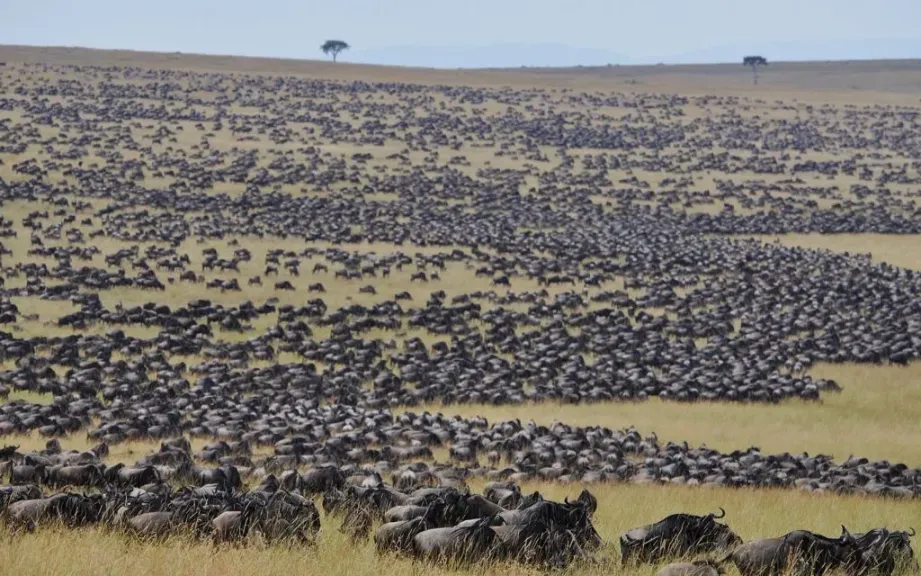
The best time to see the Great Migration in the Mara is between July and October. This period offers the most exciting opportunities for viewing this natural phenomenon.
Each month within this period presents different aspects of the migration, from the dramatic river crossings to the calmer periods of grazing and preparation for the return journey. Understanding the migration calendar will help you plan your trip to experience the most captivating moments of this natural wonder.
July
Late July marks the arrival of the wildebeest herds in the Mara from the Serengeti, signaling the beginning of one of nature’s most dramatic events. The migration usually peaks at the River Mara during this time, attracting significant wildlife activity and providing a front-row seat to the spectacle of nature.
August
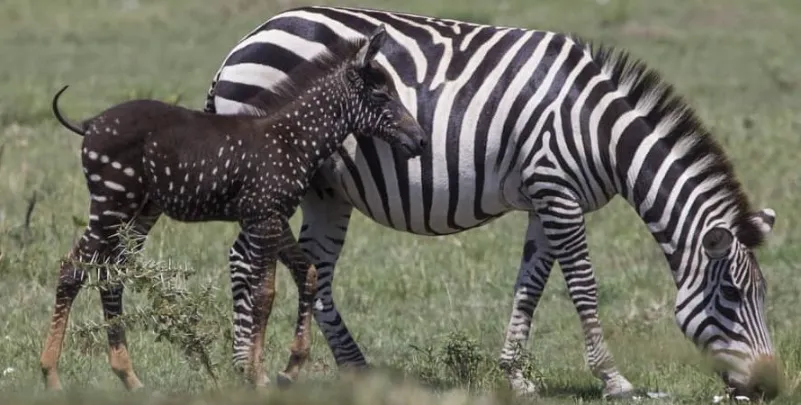
August is the peak migration month, when the massive herds of wildebeest have fully arrived in the Mara, transforming the landscape into a bustling hub of activity. This period is marked by intense predator-prey interactions, as lions and other predators take advantage of the abundance of prey.
The dramatic river crossings during this time add to the excitement, with wildebeest facing hazardous river conditions and predators, making it a thrilling experience for any visitor.
September
In September, the herds enjoy a period of relative calm in the Mara, providing excellent opportunities for game viewing and photography. The wildebeest and zebras spread out across the plains, grazing and preparing for the next phase of their journey.
October
As October progresses, the herds begin their return journey to southern serengeti, influenced by the changing seasonal rains. This transitional month is marked by increased activity as the animals prepare for their southward trek, making it an exciting time to witness the migration’s momentum.
Witnessing the Mara River Crossings
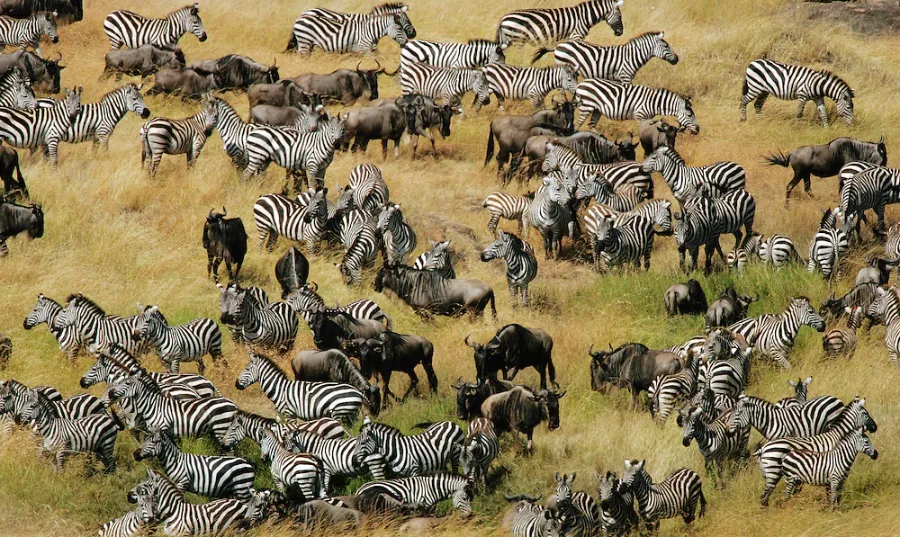
One of the most dramatic moments of the Great Migration is the river crossing. Here, wildebeest face the perilous task of navigating swift currents and avoiding the jaws of hungry crocodiles. The anticipation builds as the herds gather at the riverbanks, showing collective hesitation before a leader initiates the crossing, followed by the rest of the herd. This spectacle, often described as the ‘Greatest Show on Earth,’ is a heart-pounding experience that showcases the harsh realities of survival in the wild.
The crossings are fraught with danger, as Nile crocodiles lie in wait, ready to ambush the wildebeest as they cross. The swift waters and predatory threats make these crossings a dramatic and nail-biting event. Visitors to the Masai Mara Reserve can witness this incredible spectacle at both the Mara and Talek rivers, where the action is concentrated. The presence of vulnerable newborn calves during the migration further heightens predator activity, adding to the drama of the event.
The behavior of the wildebeest during these crossings is a fascinating study in herd dynamics and survival instincts. As they congregate at the riverbanks, the tension is palpable, and the eventual crossing is a chaotic and thrilling sight. Witnessing a crossing is truly an unforgettable experience, offering a front-row seat to one of nature’s most dramatic events.
Best Spots for Viewing the Migration in the Masai Mara National Reserve
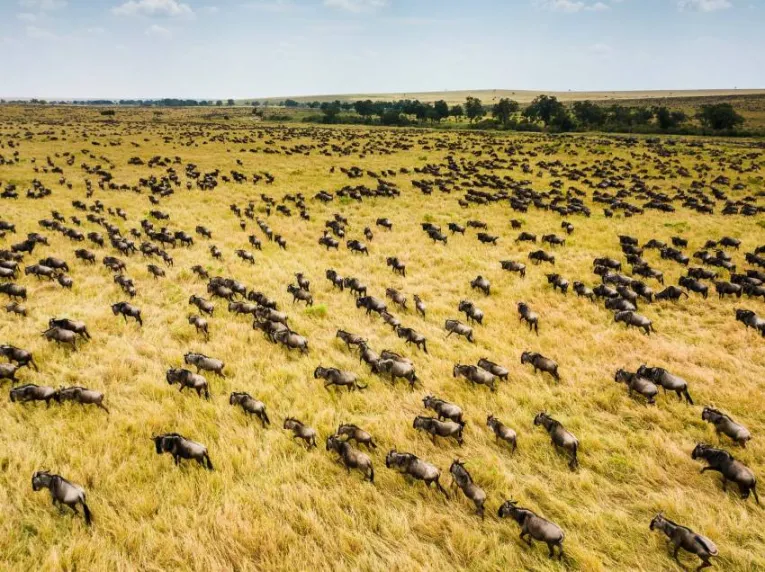
For the best viewing of the Great Migration in the Maasai Mara, there are several prime locations to consider. The Mara and Talek Rivers are top spots where you can witness the dramatic river crossings up close. Rekero Camp, located near the River Mara, offers an excellent vantage point for observing the crossings, especially during July when the herds first arrive. The plains of the Maasai Mara are at their most vibrant with wildlife from the end of July to mid-October, providing ample opportunities for game viewing.
Tourists often prioritize time at the river crossings, which typically stay within the same localities each year. Game drives in open-sided 4×4 safari vehicles offer a good vantage point for wildlife viewing and photography. The guides’ knowledge of the migration patterns and animal behavior is invaluable in ensuring you get the most out of your safari.
In addition to the river crossings, the vast plains of the Masai Mara offer spectacular views of the wildebeest herds as they graze and move across the landscape. The Masai Mara’s northern region is particularly notable for its concentration of wildlife during the migration, making it a must-visit area for any safari itinerary.
Whether you’re staying in a luxury lodge or a mobile camp, the Maasai Mara provides an unparalleled setting for witnessing the Masai Mara migration and the Great Wildebeest Migration.
Planning Your Great Migration Safari
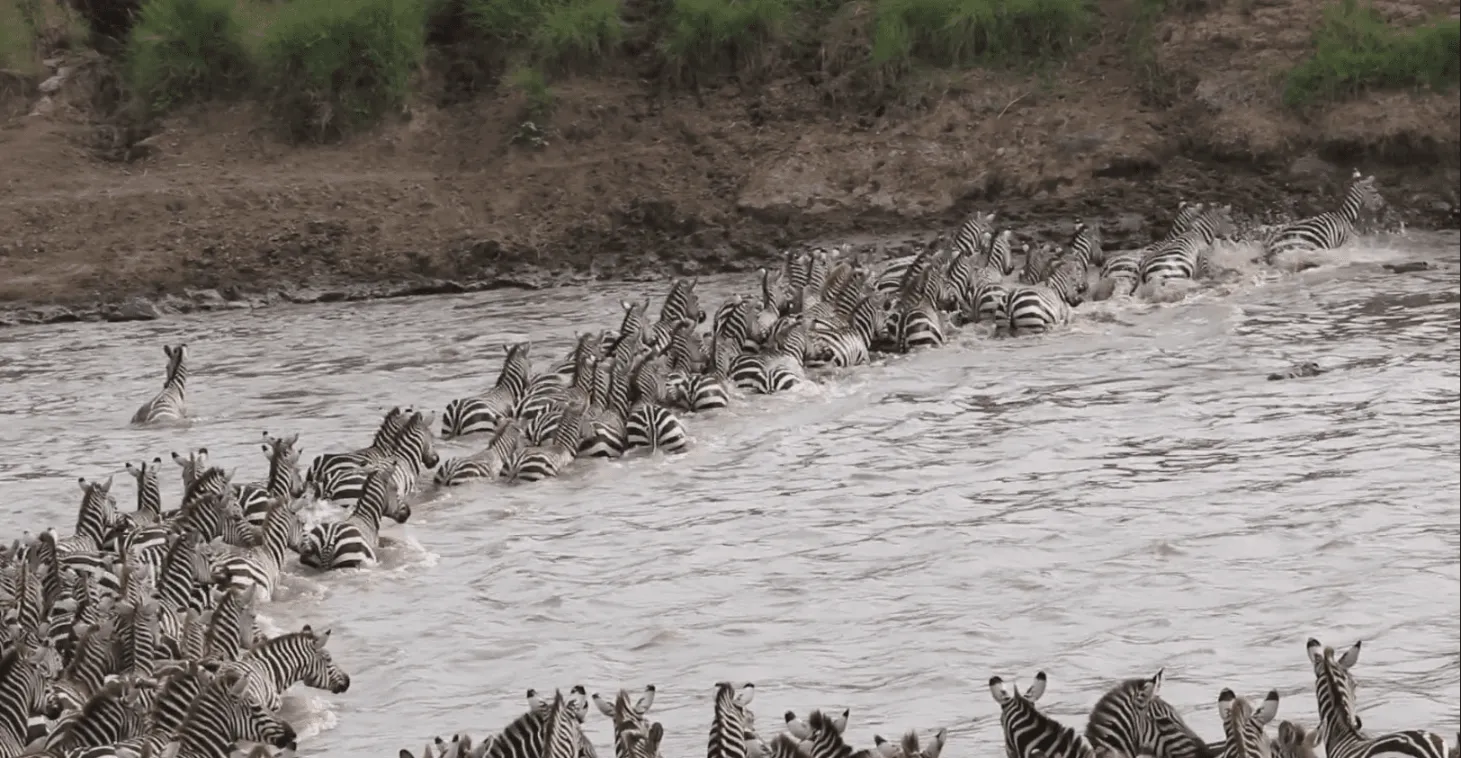
Planning a Migration safari requires careful preparation and attention to detail. Ideally, book at least 6 months in advance for the best viewing points and services. A well-planned Masai Mara migration safari allows you to fully immerse yourself in the experience of witnessing the Great Wildebeest Migration. From the thrill of the river crossings to the serene moments of game viewing on the plains, every aspect of the migration offers something unique.
Summary
The Wildebeest Migration in Kenya’s Maasai Mara is a natural wonder that captivates and inspires. From the dramatic river crossings to the vast plains teeming with life, the migration offers a unique and unforgettable experience. By understanding the key months to visit, the best spots for viewing, and the essential planning tips, you can make the most of your safari and witness the incredible spectacle of over a million animals on the move.
In conclusion, the Great Wildebeest Migration is a must-see event that showcases the beauty, power, and resilience of nature. Whether you’re a seasoned traveler or a first-time visitor, the migration in Kenya offers an unparalleled opportunity to connect with the wild and experience one of the greatest shows on earth. Plan your safari, pack your bags, and get ready to witness the magic of the Great Wildebeest Migration.
Frequently Asked Questions
What is the best time to visit Kenya to witness the Great Wildebeest Migration?
The optimal time to witness the Migration in Kenya is from July to October, as this is when the wildebeest and zebras congregate in the Maasai Mara.
Where are the best spots to view the Great Wildebeest Migration in the Maasai Mara?
The best spots to view the Great Migration in the Maasai Mara are the Mara and Talek Rivers, where the dramatic river crossings occur, along with the expansive plains of the reserve. These areas provide optimal vantage points for witnessing this breathtaking natural event.
What should I consider when planning a Migration safari?
When planning a Migration safari, it is essential to consider visa requirements, accommodation options, health and safety precautions, budget, and local customs. These factors will significantly enhance your overall experience.
Why is the Great Wildebeest Migration considered a must-see event?
The Great Wildebeest Migration is deemed a must-see event because it showcases breathtaking wildlife encounters and the remarkable resilience of animals in their natural habitat. Witnessing this phenomenon truly captures the essence of nature’s wonders.
How do wildebeest and zebras navigate the dangerous river crossings?
Wildebeest and zebras navigate dangerous river crossings by relying on herd dynamics, with a designated leader initiating the crossing. This strategy helps them manage threats from swift currents and predators such as Nile crocodiles.
Information About Masai Mara and Conservancy:
Welcome to AjKenya Safaris
Thanks for stopping by! We’re excited to help you plan an unforgettable safari.
- Phone: +254 748 258880
- WhatsApp: +254 748 258880
- Email: [email protected]
- Email: [email protected]

